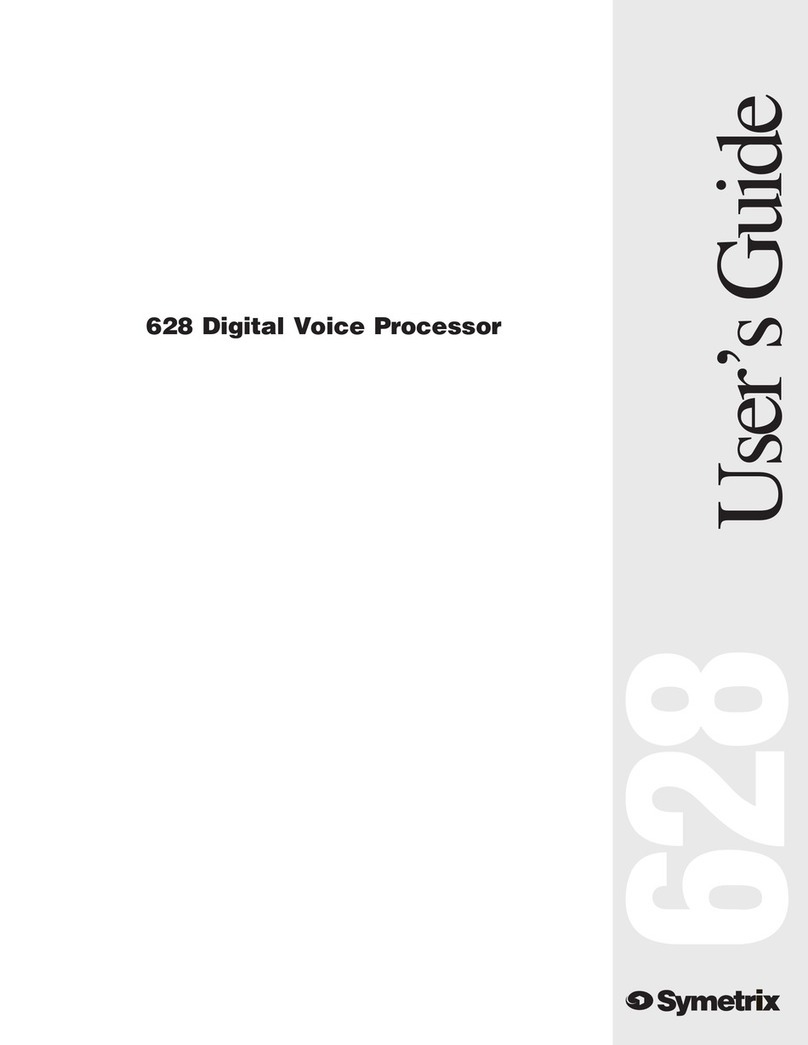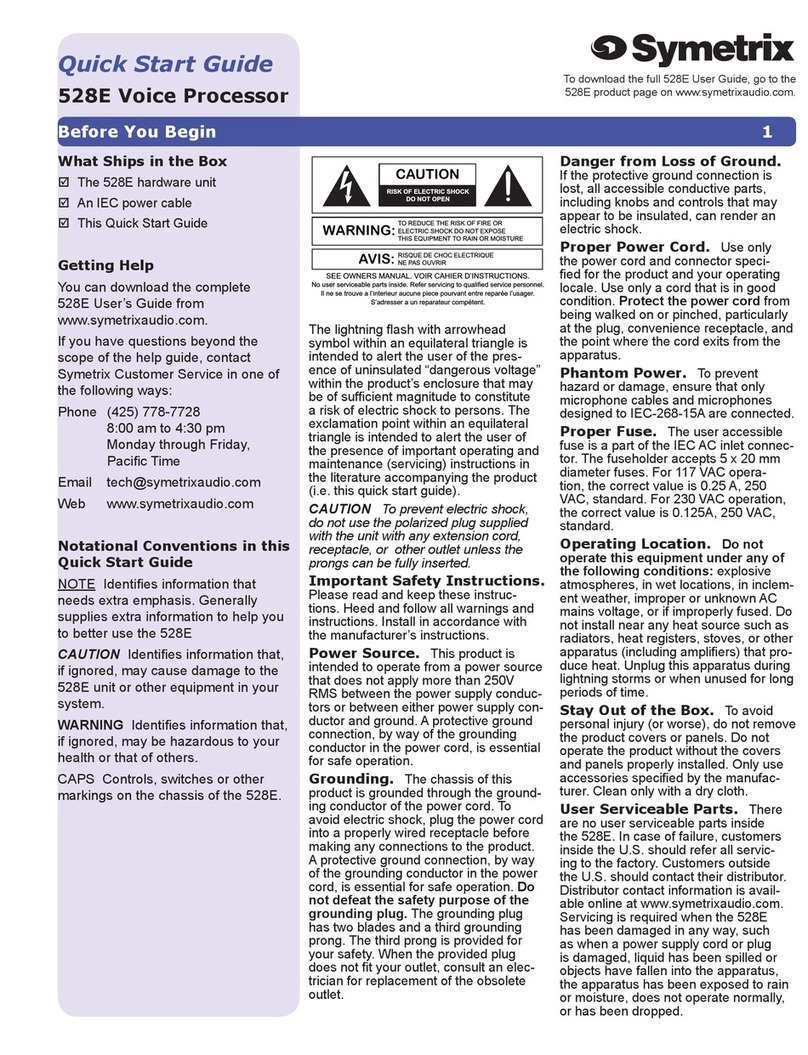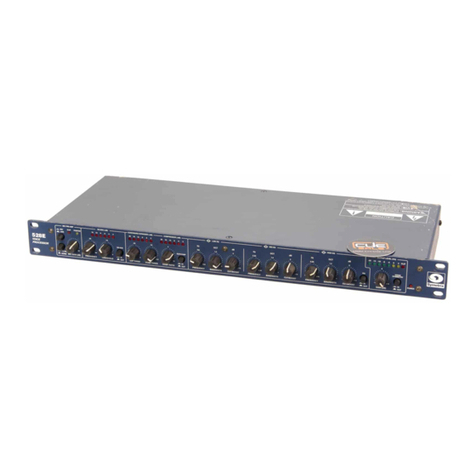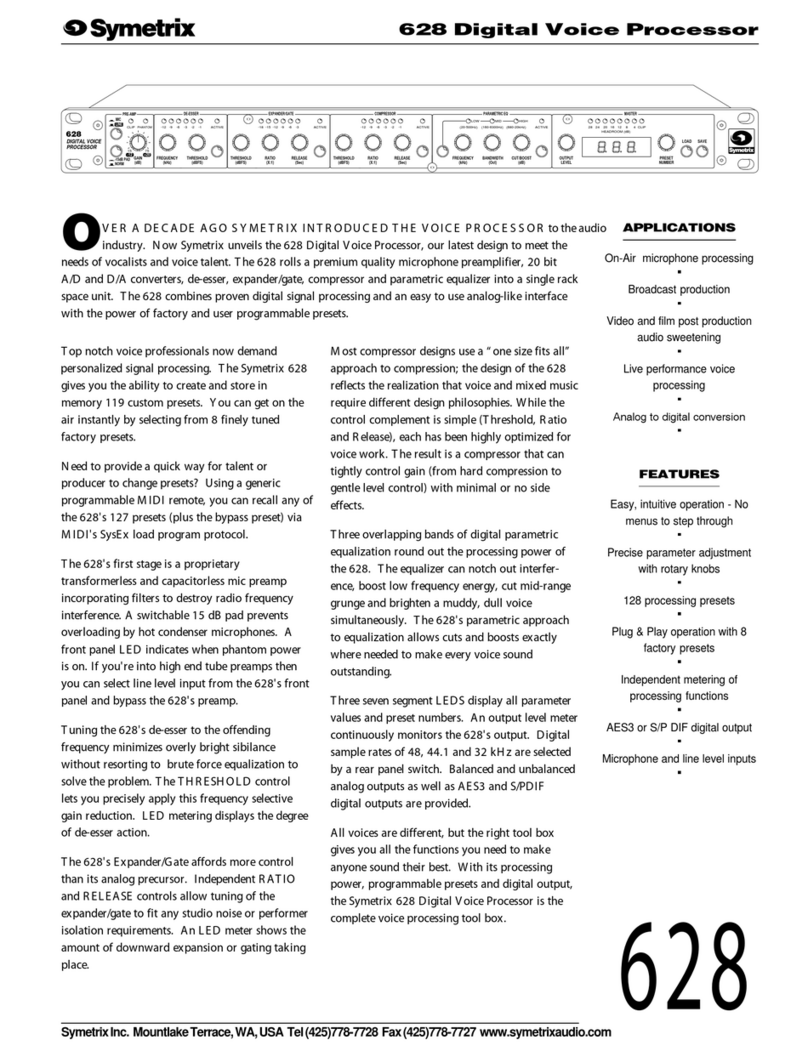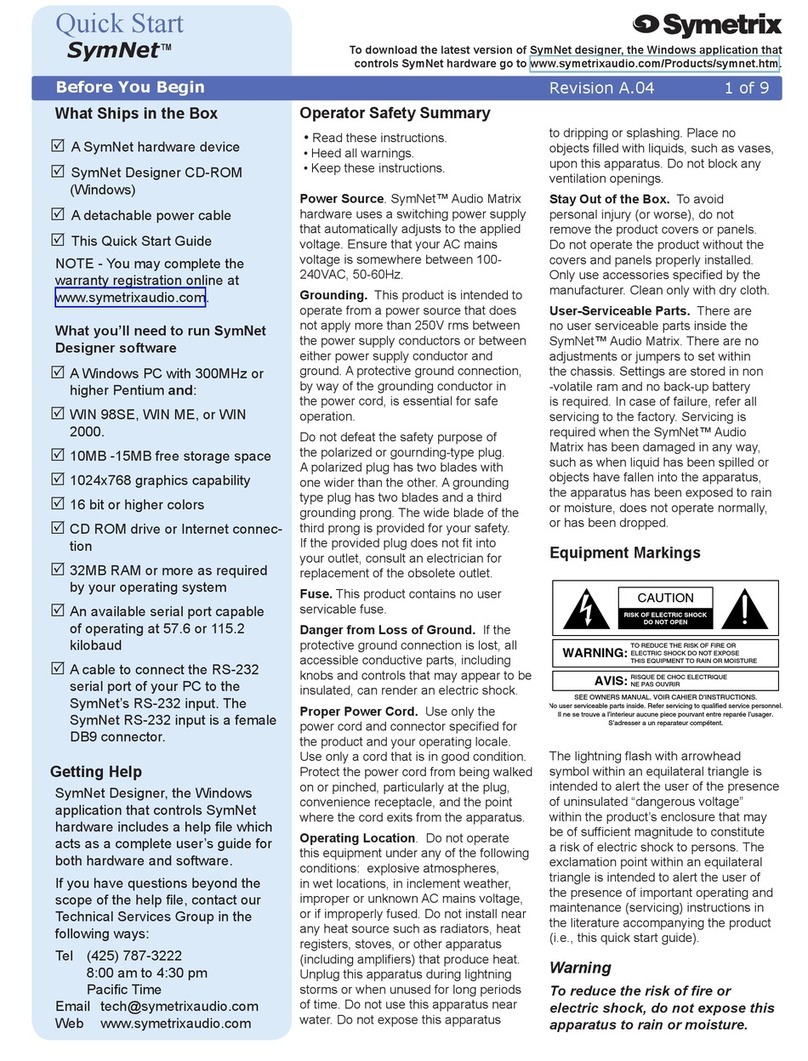
6408 216th St. SW | Mountlake Terrace, WA 98043 | USA | Tel: +1 (425) 778.7728 | Fax: +1 (425) 778.7727
Dynamic Range of Sounds and Signals
The other definition of dynamic range describes
actual level changes, or the range over which signals
fluctuate. The signals under discussion here are electri-
cal representations of sounds, so it follows that sound
has dynamic range. The dynamic range of the human
voice, from a whisper to a shout, is well over 100 dB.
Thus, the microphone converts the sound pressure of a
voice going from a whisper to a shout into an electri-
cal output signal having the same dynamic range.
Why Dynamic Range Processors are Necessary
For signals to stay below distortion and above noise,
their actual dynamic range must be kept within the
specified dynamic range of the circuits through which
those signals flow. Unfortunately, the actual dynamic
range of real world signals often exceeds the avail-
able dynamic range of even the best equipment.
For example, the dynamic range of the best analog
tape recorders is around 80 dB, while digital recorders
top out at around 96 dB. As good as these machines are,
there’s still not quite enough room for very wide dynamic
range signals. In order to maintain a 60 dB signal-to-
noise ratio (to keep the signals 60 dB above the noise
floor), the dynamic range of signals stored on the analog
tape machine would have to be restricted by 20 dB,
while the digital recorder would be restricted by 36 dB.
A compressor or limiter is often used to reduce
dynamic range by setting an upper limit on the larger
signals. In some cases, it’s better to put processing
to work on the lower end of the dynamic range than
on the upper end. In other words, instead of reduc-
ing the amount of change at the upper end of the
dynamic range with a compressor or limiter, increas-
ing the amount of change at the lower end of the
dynamic range with a downward expander or gate.
Compressors are to Downward Expanders as
Limiters are to Gates
Compressors reduce the dynamic range of their output
whenever the input signal is above threshold, while
downward expanders increase the dynamic range of their
output whenever the input signal is below threshold.
Compressors, limiters, expanders, and gates
increase or decrease signal levels by some ratio.
Compressors usually have an adjustable ratio, the
ratio of the input level to the output level, which is
generally user-adjustable. A compressor operat-
ing with a 2:1 ratio allows only a 1 dB increase in
output level for every 2 dB increase in input level.
Limiters usually have a nonadjustable ratio that
is very high (greater than 10:1). At 10:1, the limiter
allows only a 1 dB increase in the output level for
every 10 dB increase in the input level. Limiters
can be thought of as high ratio, high threshold
compressors. They are intended to “stay out of the
way” until the level goes above threshold. However,
above threshold their action is very definite.
The Threshold Concept
The threshold is the level at which a dynamic range
processor’s activity begins. In operation, the dynamic
range processor’s sensing circuitry constantly “looks
at” the incoming signal and compares it to a reference
level, which is called the threshold level. In practice that
reference level is set by the operator via the threshold
control. Remember, compressors and limiters respond
when signals at the input are above threshold, while
downward expanders and gates respond only when
signals at the input are lower than the defined threshold.
The VCA - Voltage Controlled Amplifier
The action of any dynamic range processor depends
on some method of changing the gain based on some
external signal. Typically this takes the form of a
special sort of amplifier whose gain is controlled by a
DC voltage. That part of the circuit is called a voltage
controlled amplifier, or VCA. Inside the 528E a separate
buffered audio signal is sent to a group of circuits
that comprise the detector (envelope follower to you
synthesists). The detector circuits turn the AC audio
signal into a DC control voltage, which is sent to the
VCA under the direction of the front panel controls.
Linear vs. Downward Expanders
Expander operation is easily misunderstood
unless it’s remembered that what’s being expanded
is the dynamics, or changes, of signals pass-
ing through the circuit. Expanders come in two
very different types: linear, and downward.
Linear expanders increase the dynamic range of
all signals, no matter what their actual level. The
linear expander simply makes all changes greater
by some ratio, which is sometimes user adjust-
able. In the real world, linear expanders aren’t too
practical because clipping occurs when signals just
below maximum output level are expanded.
For instance, an unprocessed signal 3 dB below
clipping that increases 2 dB won’t distort, because it’s
still 1 dB below maximum. But if that same signal is
passed through an expander operating at a 1:2 ratio,
the same 2 dB change at the expander’s input becomes
a 4 dB change at its output. However, that signal
would be 1 dB over maximum, causing distortion.
Linear expanders must be used with care, because
very few systems have enough headroom to handle
the upward dynamic range increase they produce.
Voice Processing Tutorial... continued
8
Page
User’s Guide: 528E Voice Processor
